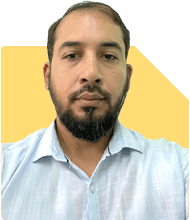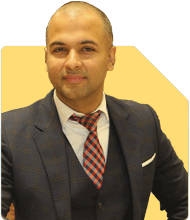Jobless at 58: How can I find work as an experienced Mechanical Engineer and Project Manager?
Maxim Emmanuel | Answer |Ask -Follow
Soft Skills Trainer - Answered on Jun 16, 2024
An alumnus of the Xavier Institute of Management and Research, Mumbai, Maxim has over 30 years of experience in training young professionals and corporate organisations on how to improve soft skills and build interpersonal relationships through effective communication.
He also works with students and job aspirants offering career guidance, preparing them for job interviews and group discussions and teaching them how to make effective presentations.... more

Myself Peyyetti Srinivas Rao mechanical engineer with PGDBM 20 years experience in project management and marketing, but today I am jobless. Please suggest me to get a job at the age of 58.
Go meet the concerned and offer your expertise.. Sure you will be hired!
However if you need professional advice happy to assist!
https://m.me/maxim.emmanuel.2024
You may like to see similar questions and answers below
Mayank Rautela | Answer |Ask -Follow
HR Expert - Answered on Feb 15, 2023
Mayank Rautela | Answer |Ask -Follow
HR Expert - Answered on Apr 02, 2023
Aasif Ahmed Khan | Answer |Ask -Follow
Tech Career Expert - Answered on Jul 02, 2024
Onkar Singh | Answer |Ask -Follow
Career Management, Skills Development Expert - Answered on Sep 02, 2024
Harsh Bharwani | Answer |Ask -Follow
Entrepreneurship Expert - Answered on Apr 08, 2025
Radheshyam Zanwar |6754 Answers |Ask -Follow
MHT-CET, IIT-JEE, NEET-UG Expert - Answered on Dec 23, 2025
Purshotam Lal |70 Answers |Ask -Follow
Financial Planner, MF and Insurance Expert - Answered on Dec 23, 2025
Purshotam Lal |70 Answers |Ask -Follow
Financial Planner, MF and Insurance Expert - Answered on Dec 23, 2025
Samraat Jadhav |2522 Answers |Ask -Follow
Stock Market Expert - Answered on Dec 23, 2025
Samraat Jadhav |2522 Answers |Ask -Follow
Stock Market Expert - Answered on Dec 23, 2025
Samraat Jadhav |2522 Answers |Ask -Follow
Stock Market Expert - Answered on Dec 23, 2025
Samraat Jadhav |2522 Answers |Ask -Follow
Stock Market Expert - Answered on Dec 23, 2025
Samraat Jadhav |2522 Answers |Ask -Follow
Stock Market Expert - Answered on Dec 23, 2025
Dr Nagarajan J S K |2578 Answers |Ask -Follow
NEET, Medical, Pharmacy Careers - Answered on Dec 23, 2025
Samraat Jadhav |2522 Answers |Ask -Follow
Stock Market Expert - Answered on Dec 23, 2025






























